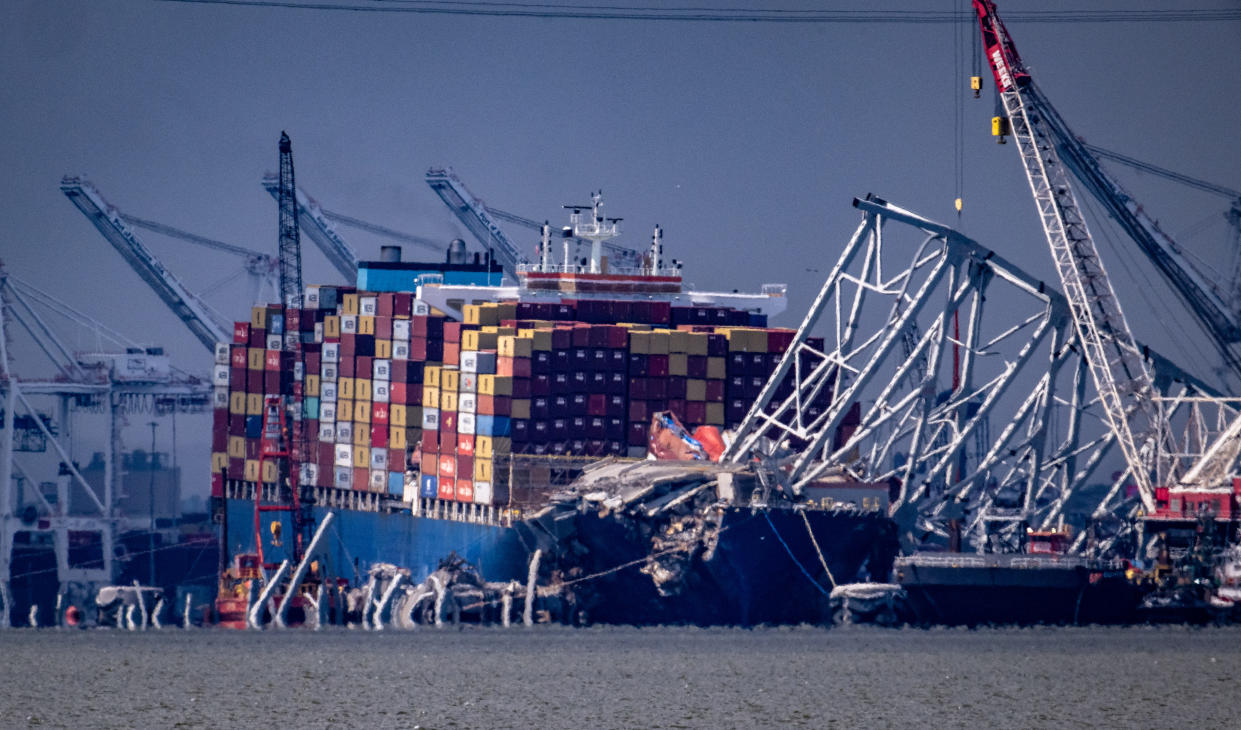Maryland AG asks to hire 5 law firms to help with Key Bridge litigation

The Maryland Office of the Attorney General is seeking authorization to hire five law firms to assist in what is expected to be a lengthy and complicated legal fight following the collapse of the Francis Scott Key Bridge.
In a pair of written requests, Attorney General Anthony Brown asked the Maryland Transportation Authority and the state’s spending board to approve a “contingent fee provision,” meaning that the firms would be paid out of money recovered from the bridge litigation.
The transportation authority unanimously approved the request at a special board meeting Monday afternoon. Next up is Maryland’s Board of Public Works, which also must approve the payment arrangement at its meeting on Wednesday.
The group of law firms “has the right mix of maritime litigation, insurance and other expertise and experience we need to pursue and protect the state’s interests in this critical matter,” Brown told the transportation authority’s board members.
The firms are Kelley Drye & Warren LLP and Liskow & Lewis APLC, both based in Houston; Downs Ward Bender Herzog & Kintigh P.A., a Hunt Valley firm; the Lanier Law Firm, based in New York; and Partridge LLC, a New Orleans firm.
Kelley Drye, who will lead the group, has extensive experience handling complex tort litigation, Brown said. Liskow & Lewis has one of the largest maritime practice groups in the country, according to the firm’s website. Partridge and Lanier are both boutique firms with experience in insurance recovery and maritime law.
Downs Ward Bender Herzog & Kintigh will serve as local counsel. The firm is woman-owned, based near Baltimore and has experience handling tort defense and maritime law, Brown said.
The attorney general’s office began searching for assistant counsel to help with the case early last month. It received 34 proposals involving 63 law firms, including 14 proposed joint ventures with multiple firms.
Related Articles
Local News | Key Bridge collapse: All formerly trapped vessels have departed port; detonation on schedule for Monday evening
Local News | Watch: Gov. Wes Moore news conference with updates on Baltimore’s Francis Scott Key Bridge collapse
Local News | Baltimore cruise industry hopes Key Bridge channel reopens in time for busy June
Local News | Mural artist shapes pain and grief into shrine to Baltimore bridge workers
Local News | Controlled demolition of Key Bridge piece atop Dali delayed by lightning, to take place Monday
The container ship Dali struck the Key Bridge on the early morning of March 26, sending the span tumbling into the Patapsco River and killing six members of a construction crew who were working on the bridge. The ship’s owner and manager, both companies based in Singapore, quickly filed notice that they would try to cap their liability in the crash at $43 million, roughly the value of the Dali and its cargo.
Parties with claims against the ship will try to stop the companies from limiting their liability, a process that takes place in federal court. So far, the city of Baltimore and a publishing company have filed claims as part of the action, but more are expected by the court’s deadline of Sept. 24.
The attorney general’s office plans to seek financial recovery for the damages suffered by the state of Maryland in the crash. It would pay the five law firms on a sliding scale depending on how much money the state recovers and how long the litigation lasts.
The firms could earn between 2% and 18% of the money the state recovers based on the outcome of the case.
The firms would not receive any compensation if the state recovers less than $350 million, the amount of a payout from Chubb, the state’s insurance provider for the Key Bridge. They also would be responsible for representing the state in an appeal or if any of the parties involved in the bridge collapse declares bankruptcy, Brown said Monday.
“This is a unique legal matter and it is difficult to compare the fee schedule to that used in other litigation,” the attorney general’s office wrote in its request to the Board of Public Works. “The fee schedule is favorable compared to the arrangements offered by other firms considered for this engagement.”
Building a new Key Bridge could cost up to $1.9 billion, according to estimates released earlier this month. President Joe Biden has pledged the federal government will pay to replace the bridge; much of the legal wrangling over the collapse will center on recouping damages.
With insurance claims expected to top $1 billion, the bridge collapse could rival or top the maritime industry’s largest-ever financial loss.

